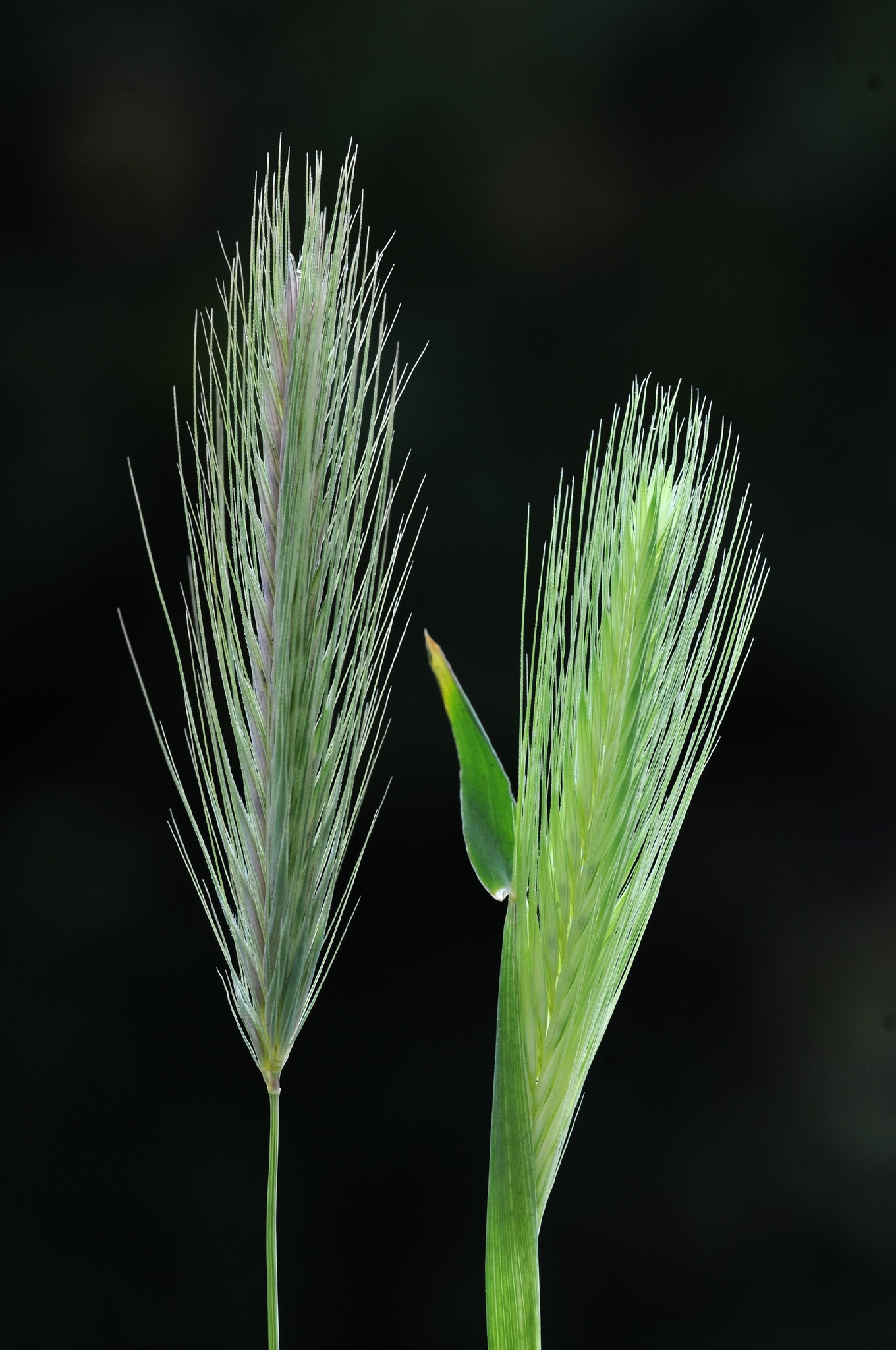
Classical Latin name for barley.
Tufted annual or perennial grasses with hollow internodes. Leaves with blades linear, usually flat or rolled, rolled in bud. Ligule membranous, truncated. Inflorescence a flattened linear spike with spikelets on condensed axes. Spikelets 1(2) flowered, grouped into 3s, the lateral pair male or sterile (uncommonly bisexual) and stalked, the central one bisexual and stalkless, laterally to dorsiventrally flattened. Glumes 2, awned, lower glume 1(-3) nerved, upper glume 1(-3) nerved, narrowly linearlanceolate. Lemmas acuminate to awned, 2-3 lobed, hairless, 5 nerved. Palea 2-nerved, 2-keeled.
The weedy wild barleys such as Hordeum murinum L. and Hordeum leporinum Link. are sometimes placed in the genus Critesion Raf. (distinguished from Hordeum by having spikes that are easily split into segments (easily pulled apart) and in having sterile (not male or bisexual) lateral spikelets) as Critesion murinum (L.) A. Löve subsp. glaucum (Steud.) B.K. Simon, which is the most widespread naturalized species in the genus, and C. murinum subsp. leporinum (Link) A. Löve, Barley Grass.
H. vulgare is the commercial barley grown for animal fodder and grain that is used for malting as a base for beer yeasts and also whisky production. Malt extract is used in a range of food products and the round-grained Pearl Barley is used for soups etc. H. jubatum, H. leporinum, H. marinum, H. murinum are significant weed species.
1-flowered spikelets in clusters of 3, each triad alternating on opposite sides of the axis of the spike and usually falling together at maturity.
1 to 25 species depending on the botanical authority, northern temperate and South America.
Löve (1984).
Source: (2005). Poaceae. In: . Horticultural Flora of South-eastern Australia. Volume 5. Flowering plants. Monocotyledons. The identification of garden and cultivated plants. University of New South Wales Press.
